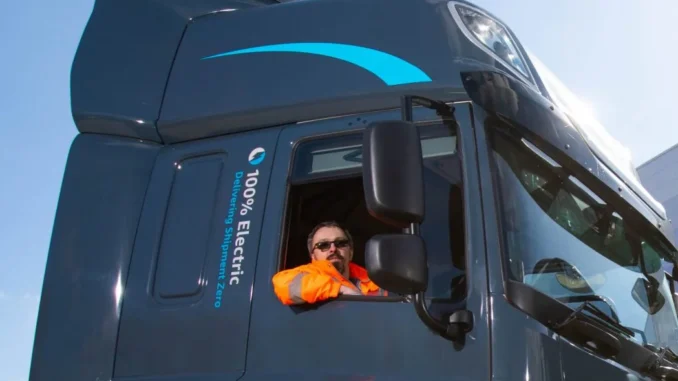
“What we found were three very large challenges,” Short told the Capital Press, and ‘very large’ is quite an understatement of the magnitude of the real problem here. The numbers seem overwhelming.
First, ATRI finds that US nationwide power generation would need to increase 40 per cent over the coming years just to accommodate the additional load placed on the various regional grids to recharge all the new heavy truck batteries. Taken in a vacuum that may sound achievable to the layperson. But no such vacuum exists: The added load must be found in addition to massive new loads being demanded for low-emissions heating, passenger vehicle charging, population growth and economic expansion, server farms, and even AI, which OpenAI CEO Sam Altman recently said will itself require a doubling of power generation.
Where will all the new power generation, and all the new supplies of critical minerals needed to make it reality, come from? ATRI estimates that converting the heavy truck fleet will require the US to somehow source a volume of lithium alone that equates to 35 years of current global production of that key mineral. Expanding the grid and making all the millions of heavy new truck batteries will also require massive new resources of copper, cobalt, graphite, antimony, and an array of rare earth minerals not currently in widespread production within US borders.
All this additional production will have to come available to the US market rapidly. But, as S&P Global Vice Chairman Daniel Yergin reminded me in a recent interview, “it currently takes 15 to 20 years to open a new mine” in the US, due to a vast array of permitting and litigation impediments. China controls the supply lines for most such minerals today, and the Xi government will satisfy its own needs and those of its allies before it would be willing to release massively higher volumes to the US and other western nations.
The cost of the trucks themselves must also be considered. Currently, a brand new diesel-powered 18-wheeler is priced at between $150,000 – $180,000, but ATRI says a new electric model goes for almost triple that, at between $400,00 – $500,000. Higher truck costs, higher power costs, and higher transport costs will inevitably lead to higher rates of inflation since most consumer goods are moved to market by 18-wheelers.
Then there’s the weight factor. Currently, a new 18-wheeler with an internal combustion engine averages a little more than 18,000 pounds. New battery electric trucks average 32,000 lbs, give or take.
The weight issue brings with it another major cost category: The increased impacts to roads, bridges, and related infrastructure like guardrails. America’s existing infrastructure was designed to withstand the lighter weights of internal combustion cars and trucks – all this added weight will require all transportation infrastructure to be upgraded to handle the bigger loads. That’s trillions of dollars in increased costs between now and 2050.
Then there’s the matter of charging. Current electric heavy trucks need to charge for an hour or more for every few hours they spend on the move, which means that a lot more forecourt space will be needed as well as many more chargers: and these will need to be very powerful chargers. Long-haul, interstate trucking isn’t even regarded as feasible for current electric trucks and current public chargers: they can only manage “return-to-base” tasks.
This challenge related to heavy trucks must be considered in the context of all the myriad other unrealistic goals and moving parts of this ill-considered subsidized energy transition being forced upon us by western governments. In the US, it also must be considered in the context of a current national debt of more than $34 trillion, and the fact that another trillion dollars is being added to that almost incomprehensible number with each passing 100 days. It has already been estimated by one highly qualified electrical engineer that the “net zero” transition will require the imposition of a command economy in the USA.
How much more of a load will we force our future generations to bear before someone in a position of authority has the good sense to demand an accounting and reconsideration of this headlong rush into a green debtor’s prison?




It still boggles my mind,” says Jeffrey Short, Vice President of the American Transport Research Institute.
Mr. Short was talking about the findings of a study conducted by ATRI recently, which quantifies how much additional power generation capacity would have to be added to America’s existing electric grid to convert the nation’s entire heavy truck fleet to battery electric vehicles.